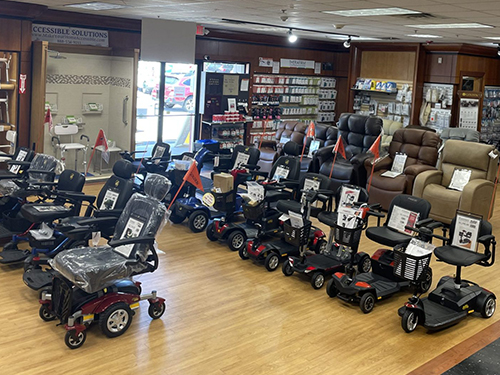
What Are the Benefits of Having Home Medical Equipment?
2024-09-20 15:30
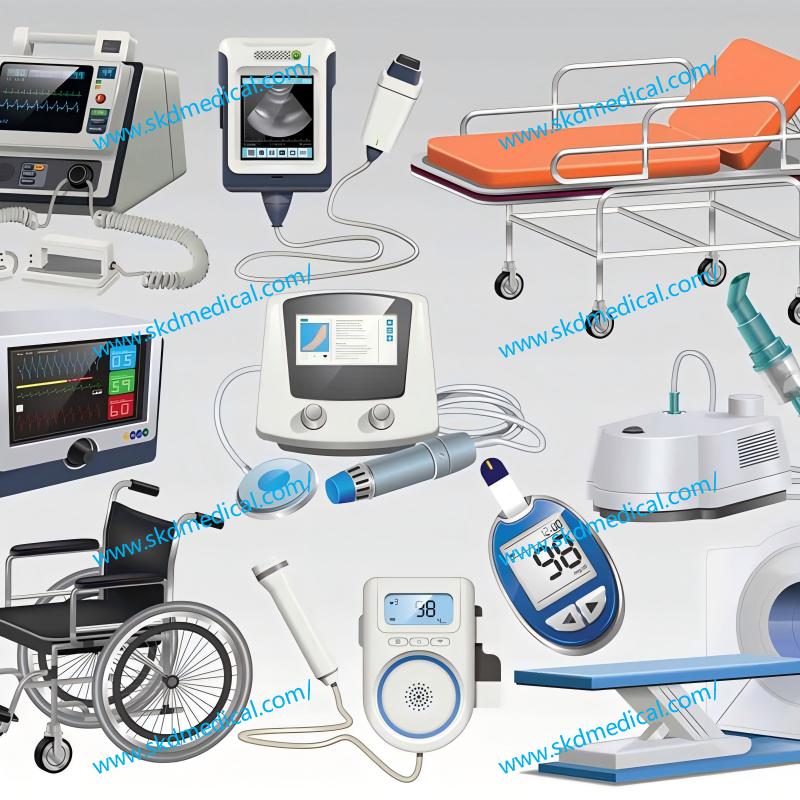
In modern society, home medical equipment is becoming more and more popular and important. Whether it is used to manage chronic diseases, respond to emergencies, or promote a healthy lifestyle, the existence of home medical equipment is gradually changing the way people manage their health. However, many people still have questions about the specific benefits of home medical equipment and how to choose the right equipment.
In this article, we will explore in detail what home medical equipment is, their types, and how they can improve the quality of life.
What Is Home Medical Equipment?
Home medical equipment (HME) refers to medical devices that can be used in a home environment. These devices are usually operated by patients or their families and are designed to help patients manage chronic diseases, monitor health conditions, or provide support in emergencies. Home medical equipment ranges from simple measuring instruments such as blood pressure monitors and blood glucose meters to complex devices such as portable oxygen machines and heart monitors. They are designed to enable patients to receive appropriate care at home, thereby reducing their dependence on hospitals or clinics.
The widespread use of these devices not only improves patients' independence and quality of life, but also relieves the pressure on the medical system to a certain extent. Especially in the fields of chronic disease management and elderly care, the role of home medical equipment is particularly prominent.
What Are the Types of Home Medical Equipment?
There are many types of home medical devices for a variety of different medical needs. Here are some common types of home medical devices:
Monitoring Devices
● Sphygmomanometers: used to measure and monitor blood pressure. People with high blood pressure can measure blood pressure regularly at home to avoid complications.
● Glucose meters: devices used by diabetics to measure blood sugar levels and help manage diet and medication.
● Electrocardiographs (EKGs): monitor heart activity, especially for heart patients to detect abnormalities in the heart at any time.
● Thermometers: used to measure body temperature, especially for children and the elderly, body temperature monitoring is particularly important.
Therapeutic Devices
● Portable oxygen machines: used for patients who need oxygen therapy, such as chronic obstructive pulmonary disease (COPD), to continuously provide oxygen at home.
● Insulin pumps: devices used by diabetics to automatically inject insulin to help better control blood sugar levels.
● Nebulizers: devices used by people with asthma or other respiratory diseases to convert medication into aerosol for inhalation therapy.
● Electrical stimulation therapy devices: devices used for physical therapy, such as electrical stimulation of muscles or nerves, to help relieve pain or promote recovery.
Assistive Devices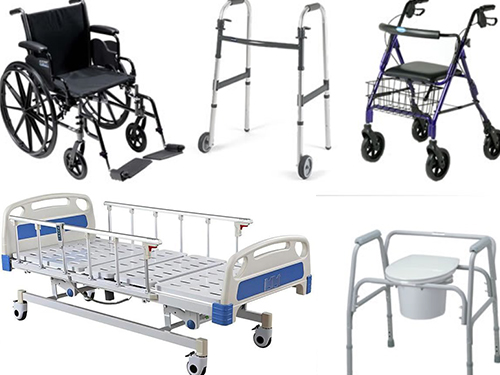
● Walkers and wheelchairs: Help patients with limited mobility to move around at home or when out and about.
● Hospital beds: Equipment designed for patients who are bedridden for long periods of time, often with height and angle adjustment features to improve comfort and safety.
● Lift chairs: Help patients with mobility difficulties sit or stand safely, reducing the risk of falls.
Emergency Response Equipment
● Personal alarms: Devices used by elderly or solitary patients that can press a button to call for help in an emergency.
● Automated external defibrillators (AEDs): Used to provide emergency defibrillation in the event of cardiac arrest, saving lives.
What Are the Benefits of Having a Home Medical Device?
Benefit 1: Eliminates the need for expensive medical procedures
Benefit 2: Encourages patients to live a healthier lifestyle
Benefit 3: Helps monitor chronic diseases
Benefit 4: Can save lives in the event of a medical emergency
Benefit 5: Improves patient safety
Benefit 1: Eliminates the Need for Expensive Medical Procedures
A significant benefit of home medical devices is that they can reduce or even eliminate the need for expensive medical procedures. This makes significant financial sense for many patients and families.
Reduce Hospitalizations
People with chronic conditions, such as diabetes, hypertension, or chronic respiratory diseases, often need to monitor their health regularly. Traditionally, this meant frequent visits to the hospital or clinic for checkups. However, with the right home medical devices, such as blood glucose meters, blood pressure monitors, and portable oxygen machines, patients can monitor these important health indicators at home. When the device detects an abnormality, patients can take timely action to avoid worsening of the disease or emergency situations, thereby reducing the possibility of hospitalization.
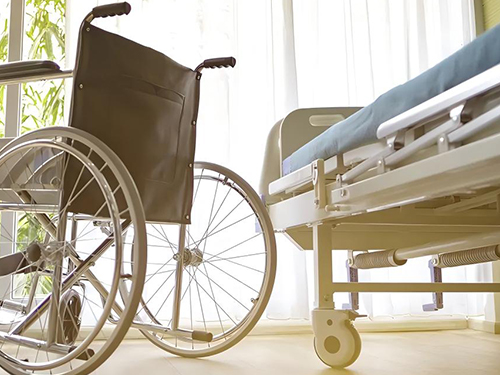 Reduce Medical Expenses
Reduce Medical Expenses
Every hospital visit or emergency room visit is expensive, and the use of home medical devices can help patients detect and treat problems early, reducing unnecessary medical expenses. For example, patients with diabetes can monitor their blood sugar levels with a blood glucose meter and adjust their diet and medications to avoid complications and the resulting high treatment costs. For patients who need long-term medical device support, such as those who need long-term oxygen inhalation, portable oxygen machines can provide continuous treatment at home, reducing the need and cost of hospitalization.
Personalized Care
The use of home medical devices also allows patients to receive more personalized care. Because patients can monitor their health anytime and anywhere, they can adjust their treatment plans according to their specific conditions. This personalized approach to care not only improves the effectiveness of treatment, but also reduces the need for expensive and potentially unnecessary medical procedures.
Benefit 2: Encourage Patients to Live a Healthier Lifestyle
Owning home medical devices not only improves health management, but also motivates patients to adopt a healthier lifestyle. As patients monitor their health at home, it is easier for them to understand their physical condition and take necessary actions to improve their health.
Instant Feedback and Health Management
By using home medical devices, patients can get instant feedback on their health status. For example, blood pressure monitors and blood glucose meters allow patients to measure their blood pressure and blood sugar levels multiple times a day, helping them better understand their body's response. Such instant feedback helps patients make healthier choices, such as adjusting their diet, increasing their exercise, or taking medication on time.
Enhanced Self-Management Awareness
The use of home medical devices allows patients to be more involved in the management of their own health. This sense of involvement can enhance patients' self-management awareness and make them more proactive in taking steps to stay healthy. Instead of just passively accepting the doctor's instructions, patients are able to make informed decisions based on their own health data. For example, patients who regularly use an electrocardiograph to monitor heart activity can see a doctor immediately when something abnormal occurs, rather than waiting for the next doctor's appointment.
Promoting Changes in Lifestyle Habits
Home medical devices not only help patients manage their diseases, but also motivate them to change their bad lifestyle habits. For example, the use of blood glucose meters can help diabetic patients better control their eating habits, while scales and health monitors can help obese patients monitor their weight and body composition, and encourage them to stick to exercise and healthy eating.
Benefit 3: Helps Monitor Chronic Diseases
Chronic diseases are a major public health challenge worldwide, and home medical devices play an important role in chronic disease management. By using these devices at home, patients can better control the progression of their diseases, reduce the occurrence of complications, and improve their quality of life.
Continuous Monitoring and Early Intervention
Home medical devices allow patients to continuously monitor key indicators of chronic diseases at home. For example, patients with hypertension can use a sphygmomanometer to measure their blood pressure regularly and adjust medication dosage or lifestyle according to the doctor's advice. Diabetic patients can keep a close eye on their blood sugar levels through a blood glucose meter and take timely measures to prevent the occurrence of hyperglycemia or hypoglycemia events. Through early intervention, patients can reduce the deterioration of the disease and avoid emergencies.
Personalized Treatment Plan
The situation of each chronic disease patient is different, so personalized treatment is very important. The real-time data provided by home medical devices enables patients to communicate better with their doctors and develop personalized treatment plans that suit them. For example, the data of heart disease patients using electrocardiograms to monitor heart function can help doctors adjust treatment plans more accurately, thereby improving treatment effectiveness.
Reduce the Occurrence of Complications
Chronic disease patients are often at risk of multiple complications, such as diabetic foot in diabetic patients and heart disease in patients with hypertension. The use of home medical devices can help patients detect problems in time, take necessary preventive measures, and reduce the occurrence of complications. For example, diabetic patients can keep their blood sugar stable through blood sugar monitoring, thereby avoiding the occurrence of diabetes-related complications.
Benefit 4: Save Lives in Medical Emergencies
Home medical devices are particularly prominent in emergency situations. Whether it is cardiac arrest or asthma attacks, these devices can provide vital support at critical moments and save patients' lives.
Rapid Response
In medical emergencies, time is a critical factor. Home medical devices such as automated external defibrillators (AEDs) can provide an immediate electric shock in the event of cardiac arrest, restore normal heart rhythm, and greatly increase the chance of survival. For asthma patients, nebulizers can quickly provide medication during an asthma attack, keep the airway open, and avoid serious complications.
Reduce Waiting Time
In an emergency, the time waiting for an ambulance to arrive can be fatal. Home medical devices can provide critical life-saving measures during the waiting period. For example, portable oxygen machines can provide oxygen support to patients when they have difficulty breathing, while personal alarms can quickly call for help in the event of a fall or other accident.
Reduce the Risk of Accidental Injuries
Older people and patients with chronic diseases face a higher risk of accidental injuries at home, such as falls and suffocation. Home medical devices such as walkers, lift chairs, and bedside guardrails can effectively reduce these risks and ensure the safety of patients at home.
Benefit 5: Improve Patient Safety
Safety is one of the biggest concerns for patients when using medical devices at home. The design and use of home medical devices can not only provide treatment support, but also improve the safety of patients in daily life.
Prevent Falls and Other Accidents
Falls are a common safety hazard for elderly and frail patients when they move around at home. Home medical devices such as walkers, wheelchairs, and lift chairs can help patients stabilize their bodies and reduce the risk of falls. In addition, guardrails beside the bed can prevent patients from accidentally rolling out of bed while sleeping.
Ensure the Accuracy of Medications and Treatments
Some home medical devices, such as insulin pumps and oxygen machines, can accurately control the dosage of medications and treatments. This precision helps avoid medical accidents caused by medication errors or improper treatment. For example, insulin pumps can automatically adjust the amount of insulin delivered according to the patient's blood sugar level, reducing the occurrence of hypoglycemia or hyperglycemia.
Reduce the Risk of Infection
In hospital environments, patients are at a higher risk of exposure to various pathogens. By using medical devices at home, patients can reduce contact with other patients, thereby reducing the risk of infection. For example, home wound care equipment and cleaning equipment can ensure care in a sterile environment, reducing the possibility of infection.
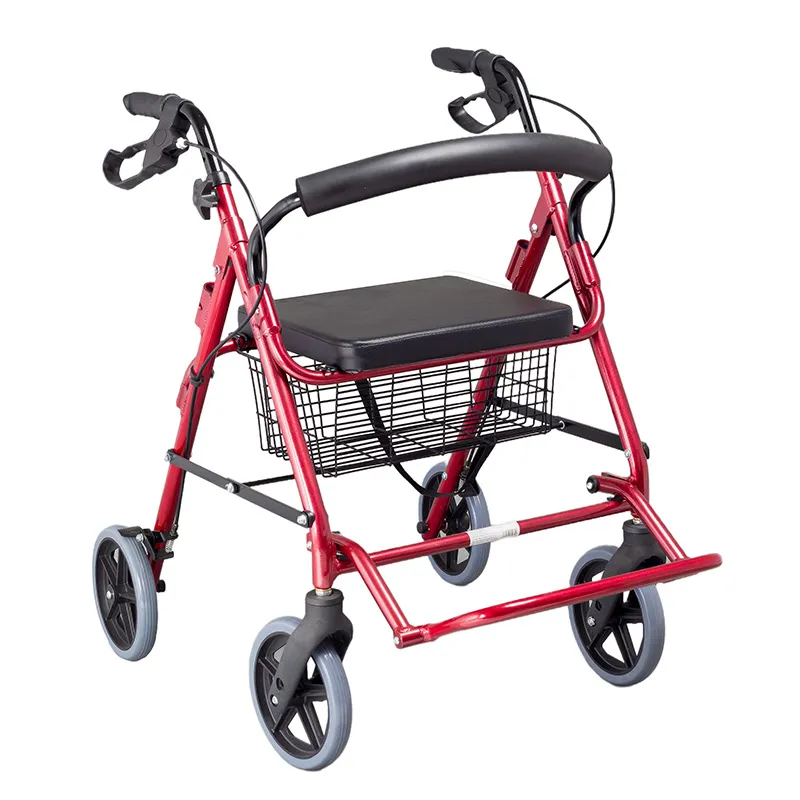
What Medical Equipment Should I Carry At Home?
Choosing the right home medical equipment depends on your health, age, lifestyle, and doctor's advice. Here are some suggestions for your reference:
Common Monitoring Equipment
● Blood pressure monitor: Suitable for people with high blood pressure or people at risk of cardiovascular disease.
● Blood glucose meter: Suitable for diabetics to help monitor and control blood sugar levels.
● Thermometer: Especially suitable for families with children or elderly people to monitor fever or abnormal body temperature.
● Electrocardiograph: Suitable for heart patients to help monitor heart function.
Necessary Treatment Equipment
● Portable oxygen machine: Suitable for patients who need long-term oxygen treatment, such as chronic obstructive pulmonary disease patients.
● Nebulizer: Suitable for patients with asthma or other respiratory diseases, for drug inhalation treatment.
● Insulin pump: Suitable for diabetics, providing stable insulin delivery.
Assistive Equipment
● Walkers and wheelchairs: Suitable for patients with limited mobility, helping them move at home or when going out.
● Hospital beds: Suitable for patients who are bedridden for a long time, providing a comfortable and safe sleeping environment.
● Lift chairs: For patients with mobility problems, helping them sit or stand safely.
Emergency Response Equipment
● Personal alarms: For elderly or single patients, providing immediate help in an emergency.
● Automated external defibrillators (AEDs): For families at high risk of heart disease, providing emergency defibrillation in the event of cardiac arrest.
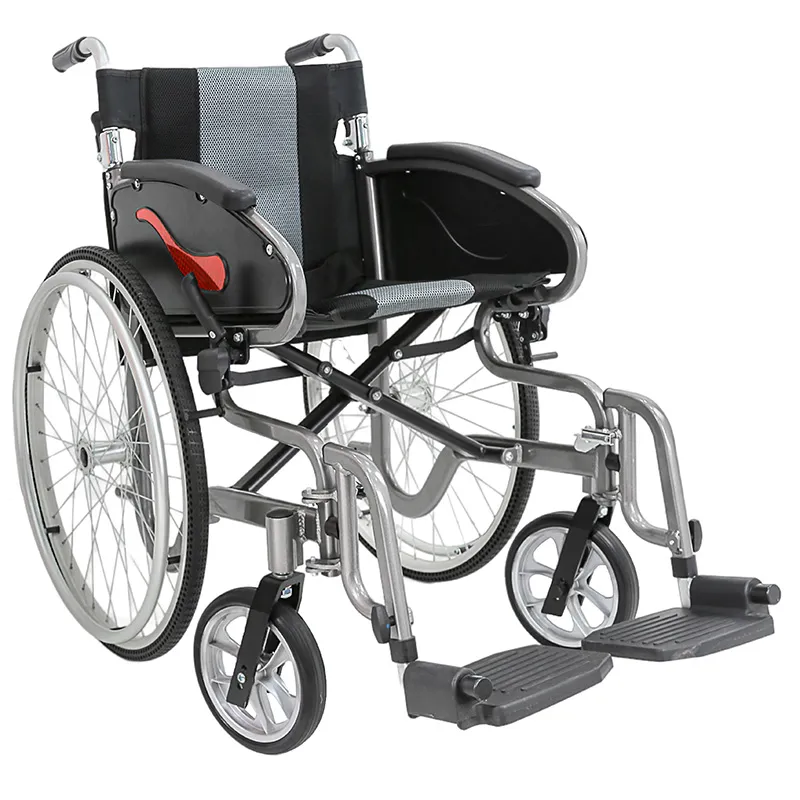
Is a Wheelchair a Home Medical Device?
A wheelchair is a home medical device. A wheelchair is a device that provides mobility support and is designed for patients who are unable to walk or have difficulty walking. This device helps them maintain mobility at home or in other environments. Modern wheelchairs come in many types, including manual wheelchairs, electric wheelchairs, and custom wheelchairs that adapt to specific needs. Using a wheelchair at home can significantly improve a patient's independence and quality of life. They allow users to move freely around the home, participate in family activities, and maintain a certain level of social interaction and independence, which is important for both mental health and physical rehabilitation.
Is a Walker a Home Medical Device?
A walker is also a home medical device. A walker is a device that provides additional balance and support for people who have difficulty walking. Types of walkers include walking frames, crutches, and quadripods, which help users increase stability and reduce the burden on their legs and feet. Walkers provide users with a safe way to move around at home, reducing the risk of falls and injuries. For people recovering from surgery, chronic disease patients, or the elderly, walkers are an important tool for regaining and maintaining mobility, helping them to carry out daily activities at home and reducing their dependence on caregivers.
Are Electric Hospital Beds Considered Home Medical Devices?
Electric hospital beds are also home medical devices. An electric hospital bed is a bed that can be adjusted in height and angle according to the needs of the patient. They are usually equipped with electric motors that can adjust the height of the head, legs, and the entire bed to provide a more comfortable posture and more convenient care. For patients who are bedridden for a long time or require special care, electric hospital beds play a key role in home care. They not only provide comfort, but also make it easier for caregivers to operate, such as helping patients get up and turn over. Electric hospital beds help prevent bedsores and other health problems associated with long-term bed rest, and improve the overall quality of life of patients.
How Much Does a Set of Home Medical Equipment Cost in the United States?
The cost of home medical equipment varies depending on the type, brand, and function of the equipment. Here are the price ranges for some common equipment for reference:
● Blood pressure monitor: $20 - $100
● Blood glucose meter: $20 - $80 (excluding test strips)
● Portable oxygen machine: $1,500 - $3,500
● Insulin pump: $4,000 - $6,000 (excluding insulin and accessories)
● Nebulizer: $30 - $150
● Personal alarm: $20 - $300
● Automated external defibrillator (AED): $1,200 - $2,500
● Walker and wheelchair: $50 - $500
● Electric hospital bed: $1,000 - $5,000
It is important to note that these prices are only for the equipment itself. The cost of maintenance, accessories, and consumables must also be considered. For example, patients using blood glucose meters need to purchase test strips regularly, and patients using oxygen machines need to replace filters regularly. In addition, some home medical devices may require installation and training by professionals, which also increases the total cost.
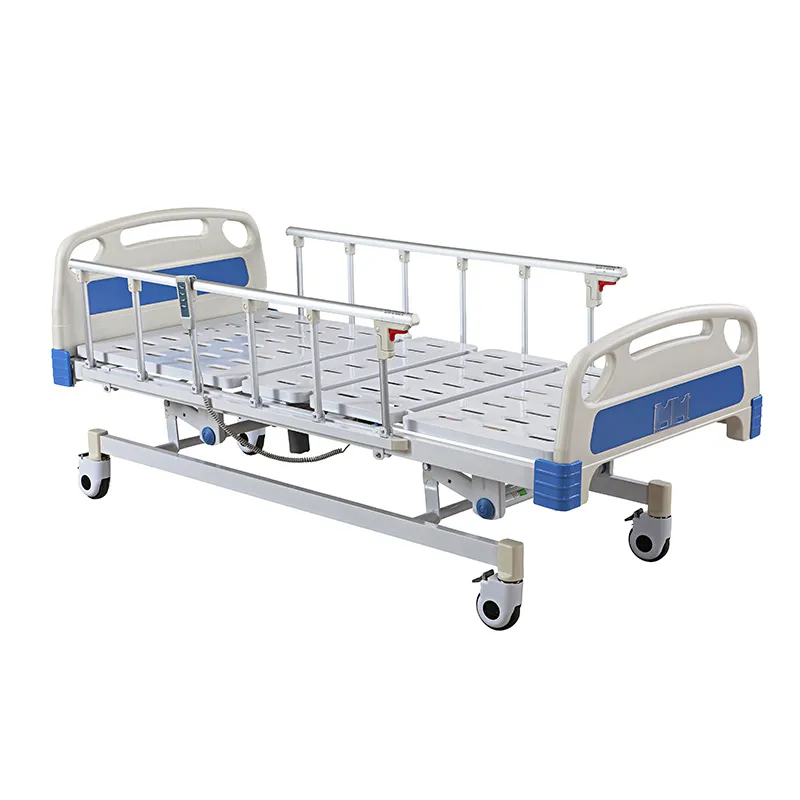
Summary of Home Medical Devices
Owning home medical devices can not only improve the efficiency of health management, but also improve the quality of life of patients in many ways. From reducing medical expenses to improving safety, these devices play an important role in daily life. As home medical devices become more popular, more and more people are beginning to recognize their importance and regard them as an integral part of health management.
By understanding and utilizing these devices, you can better control your health, improve the quality of life, and even save lives in emergency situations.


